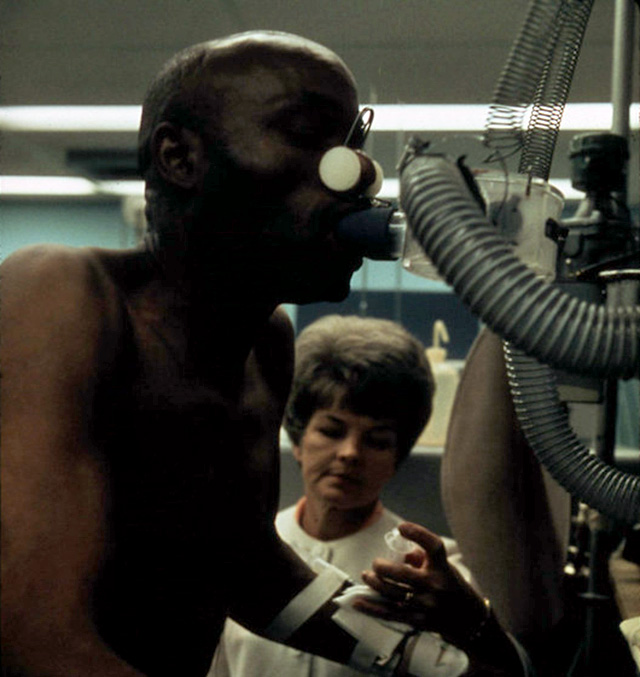The Respiratory Exchange Ratio (RER) is the ratio of the volume of CO2 being produced by the body to the amount of O2 being consumed. When this measure is calculated at the cellular level, it is called the respiratory quotient (RQ). In most cases, it is determined by taking measurements of the air being breathed. The RER can be used to estimate the contribution of fats and carbohydrates for energy production, and allows calculation of total energy expenditure.
RER versus RQ
The ratio of O2 to CO2 exchange at the cellular is called the respiratory quotient (RQ). Since measuring RQ at the cellular level is not easily achieved, an indirect measurement is done by measuring the gas exchange ratio of a person's breath, the respiratory exchange ratio (RER). The RER is therefore an estimation of the RQ, and therefore RER is sometimes used interchangeably with the term RQ.
How to Calculate RER
RER is calculated by dividing the volume of CO2 produced by the volume of O2 consumed. This is done by indirect calorimetry at rest or during exercise, using a spirometer (or another device to measure airflow or breath volume), and oxygen and carbon dioxide analyzers.
RER = volume of CO2 removed from the body / volume of O2 consumed
RER = VCO2 / VO2
 measuring VO2 by indirect calorimetry
measuring VO2 by indirect calorimetry What do the numbers mean?
An RER value is usually between 0.7 and 1.0, with a low level (0.7) indicating fat burning and a high level (1.0) indicating carbohydrate burning, and numbers in between show a mix of fuels.
RER values depend on the substrate being utilized, in other words, which macronutrients are being metabolized, which depends on the composition of food is being eaten by an individual. Most individuals consuming a mixed diet, of carbohydrates, protein and fats, will have a resting RER value of 0.82. An RQ of 1.0 indicates 100% carbohydrate oxidation, and will occur during times of high exercise intensities. A general value of 0.7 indicates 100% fatty acid oxidation (the value ranges between 0.69 and 0.73, depending on the oxidized fatty acid' carbon chain length), and will occur when fasting. No single RQ can be assigned to the oxidation of protein in the diet, due to the complexity of the various ways in which different amino acids can be metabolized.
Some of the other factors that may affect the respiratory quotient are energy balance and whether body mass is changing, circulating insulin, and insulin sensitivity.
During Exercise
At rest, the RER usually falls somewhere between 0.7 to 1.0 depending on what fuels the body is using. During exercise, it may go above 1.0, and can be used to measure anaerobic threshold and indicate whenVO2max is reached. For example, an athlete is considered to have reached their peak VO2 if several of the following occurred: a plateau or 'peaking over' in oxygen uptake, maximal heart rate was reached, attainment of a respiratory exchange ratio of 1.15 or greater, and volitional exhaustion.
Related Pages
- Measuring Oxygen Consumption by Indirect Calorimetry
- Procedure for conducting a VO2maxtest
- A review of the Lumen Metabolism Tracker which utilizes the RER metric
- Direct calorimetry method for measuring energy production.
- Formula and other fitness tests to estimate oxygen consumption.
- Videos of VO2max Tests being performed.
- Measuring Basal Metabolic Rate — VO2 at rest.
- Adult VO2maxnorm values.



